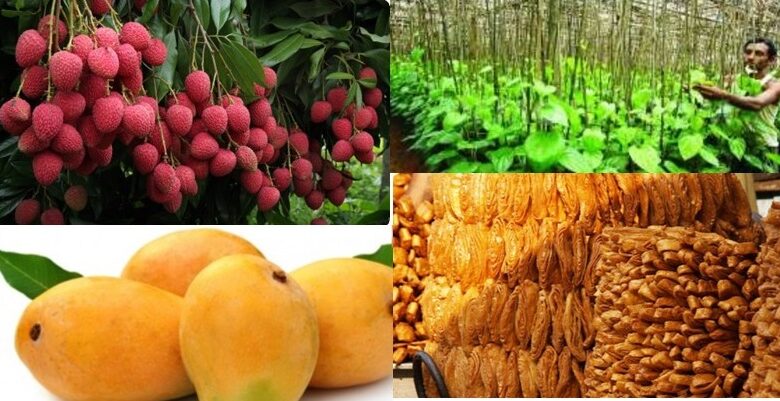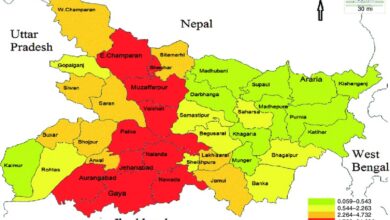Shahi Litchi and Zardalu Mango to Magahi Paan, famous Bihari foods with GI tags
Magahi Paan is exported to various countries, including UK, US and Canada

Bihar is renowned for its unique and flavorful cuisine. From fruits to sweets, several Bihari products have been awarded Geographical Indication (GI) tags, a form of intellectual property protection that identifies goods as originating from a specific geographical region or locality. Here are famous Bihari foods with GI tags.
Shahi Litchi
Shahi Litchi stands apart from other varieties by the virtue of its unique fragrance, extra-juicy pulp, and smaller-than-usual seed.
When you peel away the skin, you’ll find juicy, translucent flesh that’s incredibly sweet and aromatic. The texture is tender, almost melting in your mouth. Apart from being a delightful treat, Shahi Litchis are rich in vitamin C, antioxidants, and dietary fibre.
Bihar’s Shahi litchi received the geographical indication (GI) tag in 2018. The fruit is mostly grown in Muzaffarpur and its neighbouring districts of East Champaran, Vaishali, Samastipur and Begusarai.
The fruit is the fourth product from Bihar, after Jardalu mango, Katarni rice and Magahi paan, to receive the status. Connoisseurs of litchi may enjoy the choicest variety of the luscious fruit this season without having to step out of their homes amid the COVID-19 pandemic.
Bhagalpuri Zardalu Mango
Bhagalpuri Zardalu mango is a unique variety of mango grown in Bhagalpur and adjoining districts of Bihar. It is a creamy yellow-coloured fruit that possesses exceptional fruit quality and an enticing aroma. It is believed that the Bhagalpuri Zardalu mango was first cultivated in this region by Maharaja Rahmat Ali Khan Bahadur of Khadagpur.
The Zardalu Mango is a delight for mango enthusiasts. Its sweetness is balanced perfectly, and each bite releases a burst of flavour that transports you to the sun-kissed orchards. These mangoes are carefully harvested at the peak of ripeness, ensuring that they reach your plate with maximum flavour.
On March 28, 2018, the State of Bihar was given a Geographical Indication Tag for Zardalu Mango vide registration no. 551 by the Geographical Registry, Chennai.Rahmat Ali Khan Bahadur of Khadagpur.
Katarni Rice
Katarni Rice is the most prevalent, ceremonial, and finest quality scented rice of Bihar, India. The word “Katami” literally means an awl with a hook at the end for sewing. Awl is a pointed tool for making holes in wood or leather. The name Katami has been derived due to the shape of the apex of the paddy which is similar to the tip of the awl. It is famous for its aromatic flavour, palatability and Chura (beaten rice) making qualities.
Geographical area of production of Katarni Rice as defined by the Department of Agriculture is comprised of south alluvial Gangetic plane of Munger, Banka and South Bhagalpur.
Untainted appearance and delectable taste. Brown Husk with awl-shaped apex. Strongly aromatic cooked and uncooked rice. Soft and Non-sticky rice with good digestible qualities. Famous for palatability and beaten rice-making qualities.
Scented Rice has been grown in India about 2500 years since the time of Susruta. The First documented record of both scented rice and short duration rice in India was made by Susruta.
It is believed that Maharaja Rahmat Ali Khan Bahadur of Kharagpur was the first person to get Katarni planted in Bhagalpur region.
Each rice seed can produce up to 3,000 grains, which is the highest level of production amongst cereals. There are 40,000 different cultivated species.
Health Benefits: Katarni rice contains a good balance or proteins, carbohydrates and fibre. Represents a good source of some vitamins and minerals. Low in calories and fat.
Magahi Paan (betel leaves)
Magahi Paan is a leading cultivar of Bihar origin, specially grown in the Magadh regions of four districts-Aurangabad, Gaya, Nawada, and Nalanda. Magahi Paan growing in these areas are of excellent quality and it is expensive among other betel leaves. Its betel quid is pungent, less fibrous, and easily soluble inside the mouth. It is known for its appearance, shiny dark green colour, typical taste, and excellent keeping quality. It’s non-fibrous, sweeter, tastier and the softest of the lot.
Magahi Paan is known for its excellent quality and unique features. Compared to other betel leaves, it is non-fibrous, sweeter, and easily soluble inside the mouth. Its betel quid has a mildly pungent flavor, making it a favorite among consumers.
Magahi Paan is exported to various countries, including the UK, the USA, Canada, Pakistan, Bangladesh, Malaysia, Singapore, Sri Lanka, and the Middle East. However, it faces competition from other varieties like Calcutta, Bangla, and Desi paan, which poses challenges for the growers
The Government of India granted the Geographical Indication (GI) status to Magahi Paan as a mark of its authenticity and regional significance. This recognition ensures that the product’s identity is protected and helps boost its market value.
Magahi Paan is not just a betel leaf; it represents the rich cultural heritage and agricultural diversity of Bihar.
Silao Ka Khaja
Khaja is a multilayered, crispy sweet and conventional Bihari dessert. Of all the places you could get Khaja from, Silao- a town in the Nalanda district of Bihar- is utterly prominent.
Khaja traces its roots to the town of Silao, situated in the Nalanda district of Bihar. The history of this sweet dates back nearly 200 years when it was first crafted by the Bashiende Kali Sah family. Initially known as “Khajuri,” it gradually became popular as Khaja over time.
There are around 60 shops at Silao which are exclusively involved in the selling of this Bihari dessert. Most of the shop owners are traditionally related to the manufacturing and selling of Khaja. This Bihari dessert comprises around 15 layers of dough placed over one another. It has Wheat-flour, Sugar, Maida, Ghee, Cardamom, and Aniseeds as its ingredients. It is deep-fried until it turns crisp. The crisp croissants are then soaked in the sugar syrup until they absorb
the sugar syrup.
The geographical Indications Registry at Chennai granted GI tag to Silao Khaja, the traditional delicacy of Nalanda district of Bihar in 2018. The local water and climate of Silao contribute to its distinctive taste and appearance.
Silao Khaja has gained popularity not only within India but also globally. It is exported to countries like the USA, UK, Dubai, Pakistan, Spain, and Singapore. The Kali Sah family’s legacy continues, with the fourth generation actively involved in this traditional business.


